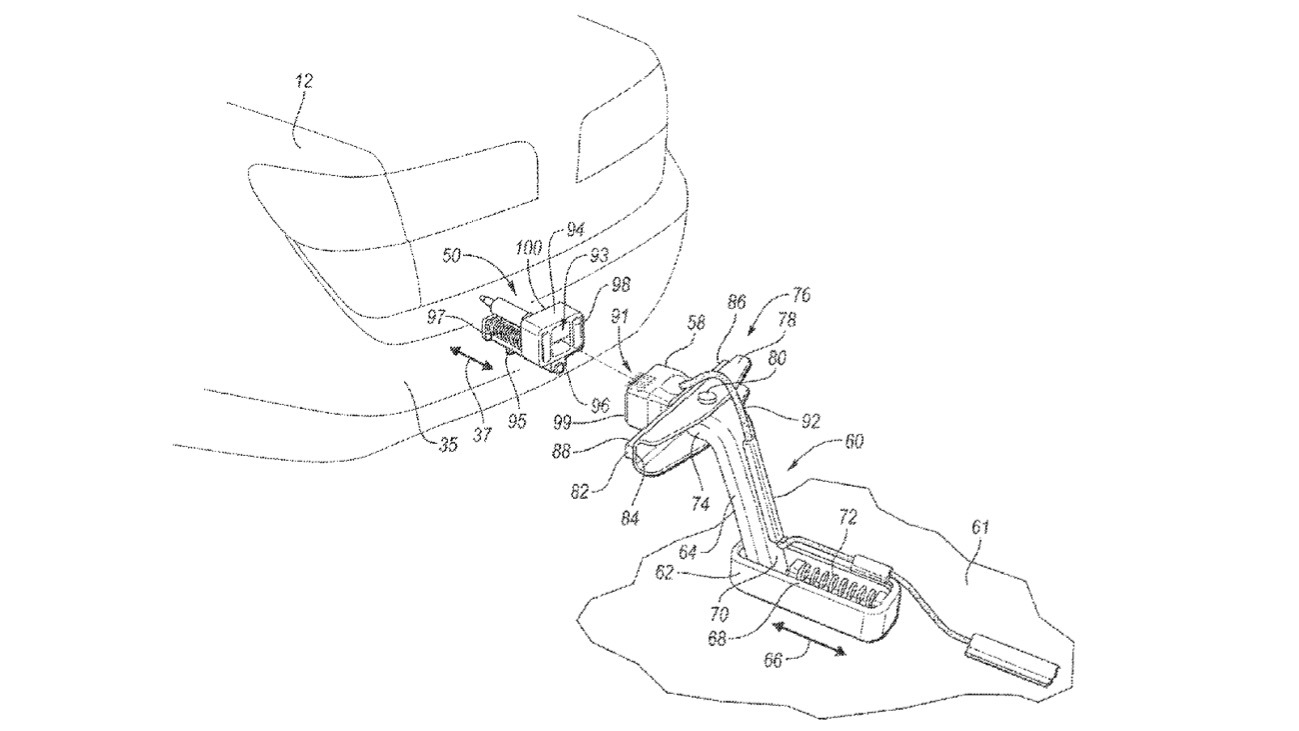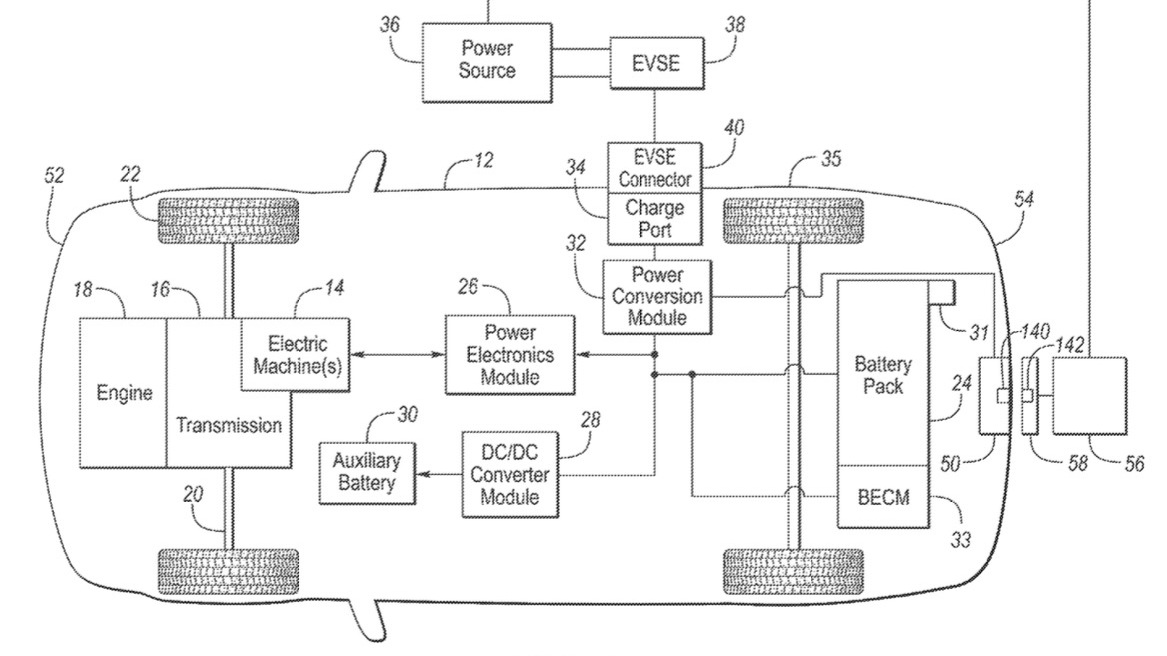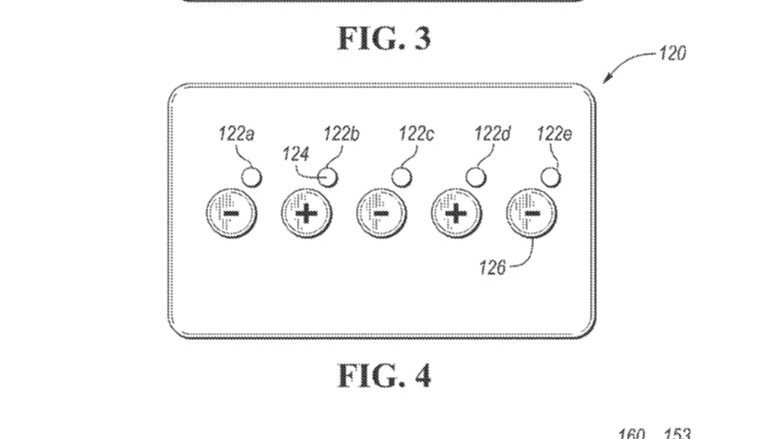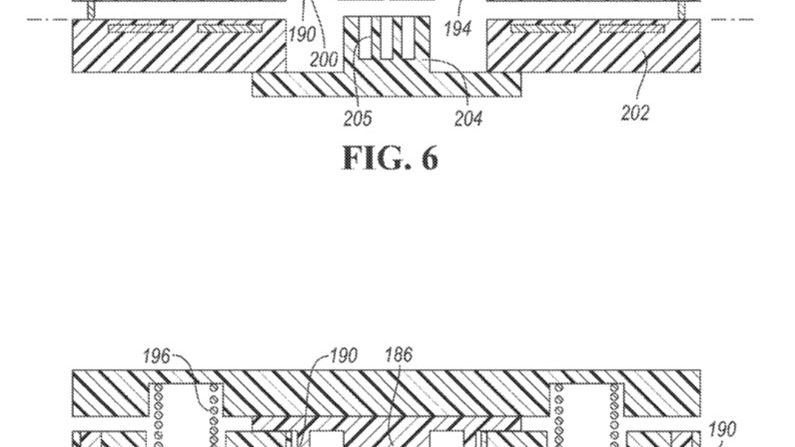Ford has filed a patent application for a magnetic EV charger that lets drivers charge without having to get out of their cars.
Filed with the United States Patent and Trademark Office (USPTO) Nov. 1, 2022, the application shows how charging EVs could be more automated, eliminating the need to physically plug in a cable, saving time and effort.
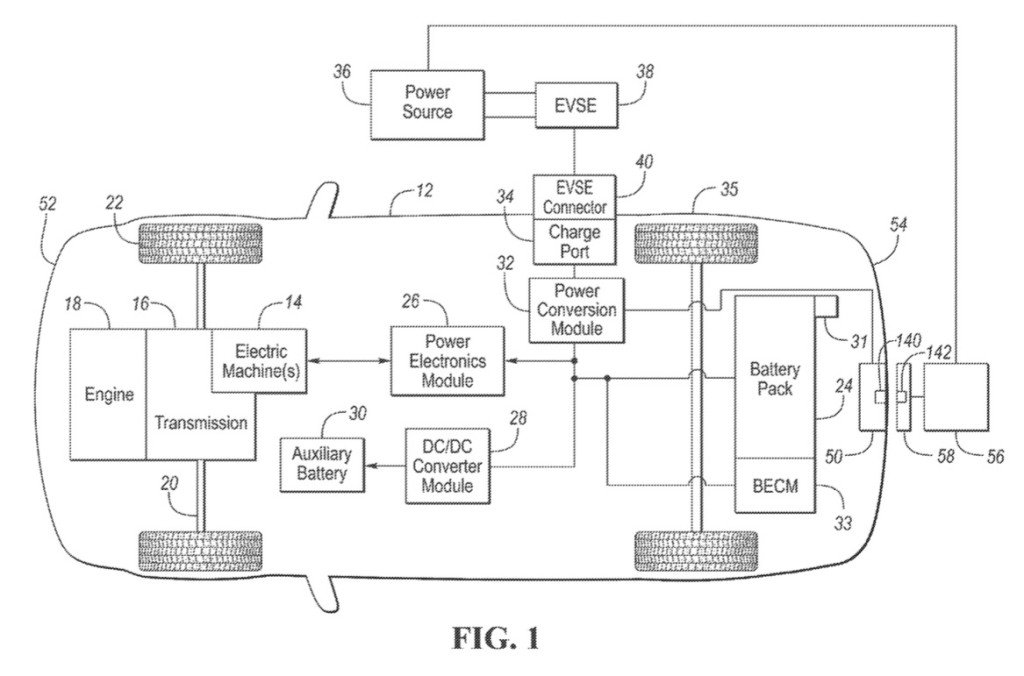
Ford magnetic EV charger patent image
In addition to a conventional charge port, Ford proposes fitting EVs (and plug-in hybrids) with a second port located in the bumper. To charge, the vehicle is maneuvered to align this port with a charger, both of which would have magnets to secure the connection.
This would be a form of conductive charging, with a physical connection between vehicle and charging, rather than inductive wireless charging, where electricity is transmitted through an air gap, Ford noted in the application, adding that this hardware could be configured for AC or DC charging.
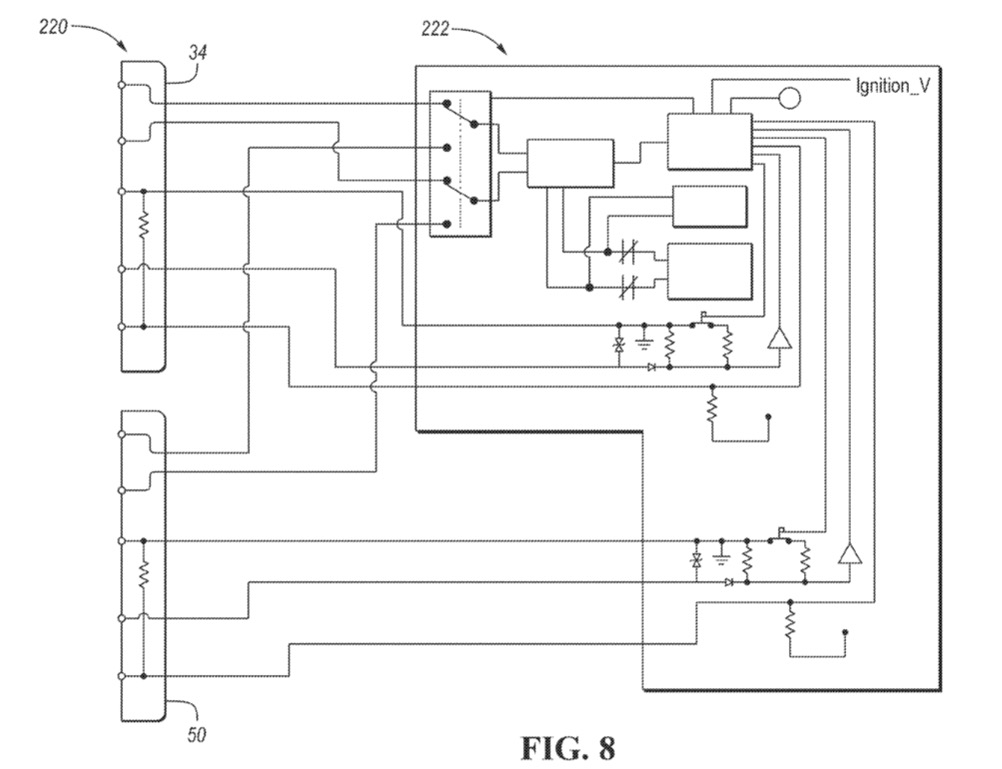
Ford magnetic EV charger patent image
To help align the vehicle with the charger, the application also calls for some degree of articulation to enable a connection "as long as the driver is reasonably close" to the charger. Given the charge port's bumper-mounted position, this sounds a bit like reversing to hitch up a trailer, something Ford has already tried to take the guesswork out of with its Pro Trailer Backup Assist and Pro Trailer Hitch Assist systems.
As with all new-car technology, the appearance of a patent application doesn't confirm production intent. Ford isn't the first automaker trying to eliminate charging cables, though. Ram unveiled an inductive charging robot alongside its Revolution BEV electric truck concept, while Tesla showed a somewhat disturbing robotic charger prototype in 2015. General Motors hasn't revealed anything comparable, but has tried to patent dual charge ports for added energy flexibility.
